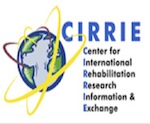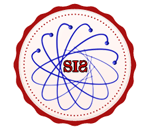SERINE RACEMASE: A TALE OF TWO STEREOISOMERS D-CYSTEINE AND D-SERINE
Department of Neuroscience, Johns Hopkins School of Medicine, Baltimore, USA
*Corresponding Author:
Robin Roychaudhuri, Department of Neuroscience, Johns Hopkins School of Medicine,
Baltimore,
USA,
Email: robinroychaudhuri@gmail.com
Received: 17-Jun-2022, Manuscript No. AJOPY-22-66828;
Editor assigned: 21-Jun-2022, Pre QC No. AJOPY-22-66828 (PQ);
Reviewed: 05-Jul-2022, QC No. AJOPY-22-66828;
Revised: 12-Jul-2022, Manuscript No. AJOPY-22-66828 (R);
Published:
19-Jul-2022, DOI: 10.54615/2231-7805.S2.002
Abstract
Serine Racemase racemizes not only serine but cysteine. The expression profile of both these stereoisomers in the brain suggests discrete and possibly independent roles. While D-serine serves as a co agonist at the NMDA receptor, D-cysteine plays roles in neural development by inhibiting proliferation of neural progenitor cells via AKT signaling. By racemizing serine and cysteine, mammalian serine racemase may play important roles in neural development and in psychiatric disorders. ASEAN Journal of Psychiatry, Vol. 23(S2) July, 2022; 1-5.
Keywords
Serine Racemase, D-Serine, D-Cysteine, Neural Progenitor Cell, Adult Neurogenesis, Proliferation, Metabolism, Sub ventricular Zone, NMDA receptor, Racemization
Introduction
D-amino acids are being recognized as molecules with function [1-3]. The shibboleth of these stereoisomers being present only in invertebrates has been dispelled. D-serine is a well-studied stereoisomer that functions as a co agonist at the glycine site of the NMDA receptor and associated function [4,5]. NMDA receptor hypofunction has documented significance in schizophrenia. Our unpublished work has shown that D-serine may have additional metabolic roles [6]. We identified endogenous D-cysteine in the developing mammalian brain where it regulates neural progenitor cell proliferation via AKT signaling. D-cysteine is racemized from L-cysteine by serine racemase (SR), the same enzyme that racemizes D-serine from L-serine [7]. The purpose of this mini-review is to showcase a novel stereoisomer D-cysteine, highlight roles for D-serine in neuronal metabolism and raise questions aimed at understanding their function in mammals.
Serine Racemace
Amino acid racemases are enzymes that interconvert L and D stereoisomers. Racemases are comprised of two families, Pyridoxal Phosphate (PLP) cofactor dependent and PLP independent. Well known among the PLP dependent family is serine racemase (E.C 5.1.1.18). SR synthesizes D-serine from L-serine and vice versa in presence of PLP, Mg2+ and DTT. SR is a bifunctional enzyme as it also converts L-serine and D-serine to produce ammonia and pyruvate [8,9].
A recent GWAS study identified SR as a risk factor gene in schizophrenia [10,11]. SR deficient mouse (SR-/-) show decreased NMDAR signaling, altered D-serine metabolism, glutamatergic neurotransmission and elevated anxiety behavior [12]. Our work shows that SR is an effecient cysteine racemase [13]. The importance of SR in neurobiology and psychiatry has been underscored by the seminal works of Solomon Snyder, Joe Coyle, Herman Wolosker and other laboratories [1,14-19].
Cysteine is the fastest racemizing amino acid and its omission in the literature made us curious [20,21]. Using a bioluminescent luciferase assay, chiral chromatography and SR-/- mice, we recently identified endogenous D-cysteine in mammalian brain and pancreas [7]. D-cysteine is enriched in the embryonic mouse brain (E9.5) at a concentration of 4.5 mM and decreases with development to approximately 50 µM. D-cysteine is also enriched in adult human brain (white matter) and in the cerebrospinal fluid at a concentration of approximately 40 µM.
Our work shows that D-cysteine is synthesized by SR and has a different temporal expression profile in the brain compared to D-serine. D-cysteine inhibits neural progenitor cell proliferation and signals via AKT, activating its downstream targets Foxo1, Foxo3a and GSK-3b. This inhibition is not shared by D-serine or L-cysteine.
The temporal distribution profile of mammalian D-cysteine suggests that it may play roles in neural development with possible implications in autism spectrum and schizophrenia [2]. D-Serine. D-serine is also synthesized by SR and serves as a co agonist at the glycine modulatory site of the NMDAR [4].
D-serine is well characterized among the identified D-stereoisomers, highlighting its role in psychiatry [1,4,5,11]. For an in depth review on D serine, the reader is directed to a few excellent references [3,5,11]. Our (unpublished) work on serine metabolism implicates D-serine in adult Sub Ventricular Zone (SVZ) neurogenesis, its actions mediated by alterations in fatty acid metabolism [6].
Lack of D-serine and possibly L-serine in the adult SVZ induces a quiescent state in isolated mouse Neural Stem Cells (NSCs), resulting from local alterations in fatty acid metabolism. Such metabolic alteration leads to loss of membrane lipid microenvironment in NSCs leading to their quiescence [22].
Dysregulation of adult neurogenesis and loss of olfactory behaviour in schizophrenia and mental health disorders now appears to be beyond an epiphenomenon [23,24]. Elucidating the role of D-serine and L-serine in the context of neuronal and astrocytic metabolism may uncover interesting aspects with implications in disorders of adult neurogenesis like Alzheimer’s disease and schizophrenia [25,26].
An explication
A few questions arise from such explication; What is the function of these stereoisomers synthesized by SR? Does SR play different roles during development and in adult?
Dysregulation of adult neurogenesis and loss of olfactory behaviour in schizophrenia and mental health disorders now appears to be beyond an epiphenomenon [23,24]. Elucidating the role of D-serine and L-serine in the context of neuronal and astrocytic metabolism may uncover interesting aspects with implications in disorders of adult neurogenesis like Alzheimer’s disease and schizophrenia [25,26].
If so, what is its expression profile? Is there a redundancy in function of these two stereoisomers, or do they serve specific functions?
What is the purpose of the distinct temporal disposition between D-serine and D-cysteine in the brain? These are a few among the many questions that may be relevant in understanding these two stereoisomers (separated by one atom) in an increasingly complex cellular environment.
Acknowledgment
I acknowledge my mentor Prof. Solomon Snyder (Sol) at the Dept. of Neuroscience, Johns Hopkins School of Medicine, in whose laboratory my work identified endogenous D-cysteine. This silent discovery was the result of brainstorming sessions with Sol, during which I got a glimpse into his legendary mind and a plethora of ideas about these novel molecules.
References
- Snyder SH, Ferris CD. Novel neurotransmitters and their neuropsychiatric relevance. The American Journal of Psychiatry. 2000; 157(11): 1738-1751.
[Crossref] [Google Scholar] [PubMed]
- Roychaudhuri R, Snyder SH. Mammalian D-cysteine: A novel regulator of neural progenitor cell proliferation: Endogenous D-cysteine, the stereoisomer with rapid spontaneous in vitro racemization rate, has major neural roles. Bioessays. 2022; 44(7): e2200002.
[Crossref] [Google Scholar] [PubMed]
- Fuchs SA, Berger R, Klomp LW, Koning TJ. D-amino acids in the central nervous system in health and disease. Molecular Genetics and Metabolism. 2005; 85(3): 168-180.
[Crossref] [Google Scholar] [PubMed]
- Balu DT. The NMDA Receptor and Schizophrenia: From Pathophysiology to Treatment. Advances in Pharmacology. 2016; 76(1): 351-382.
[Crossref] [Google Scholar] [PubMed]
- Wolosker H. The Neurobiology of d-Serine Signaling. Advances in Pharmacology. 2018; 82(1): 325-348.
[Crossref] [Google Scholar] [PubMed]
- Robin Roychaudhuri HA, Solomon H, Snyder. Serine Racemase mediates Subventricular Zone Neurogenesis via Fatty acid Metabolism. BioRxiv. 2022.
[Crossref]
- Semenza ER, Harraz MM, Abramson E, Malla PA, Vasavda C, Gadalla MM, et al. D-cysteine is an endogenous regulator of neural progenitor cell dynamics in the mammalian brain. Proceedings of the National Academy of Sciences. 2021; 118(39): e2110610118.
[Crossref] [Google Scholar] [PubMed]
- Wolosker H, Blackshaw S, Snyder SH. Serine racemase: a glial enzyme synthesizing D-serine to regulate glutamate-N-methyl-D-aspartate neurotransmission. Proceedings of the National Academy of Sciences. USA. 1999; 96(23): 13409-13414.
[Crossref] [Google Scholar] [PubMed]
- Wolosker H, Sheth KN, Takahashi M. Purification of serine racemase: biosynthesis of the neuromodulator D-serine. Proceedings of the National Academy of Sciences USA. 1999; 96(2): 721-725.
[Crossref] [Google Scholar] [PubMed]
- Birnbaum RZF, Hyde TM, Kleinman JE, et al. Serine racemase (SRR) and schizophrenia risk: Functional genomic characterization of SCZ GWAS risk SNP rs4523957 by RNA sequencing. American College of Neuropsychopharmacology. 2014.
- Coyle JT, and Balu DT. The Role of Serine Racemase in the Pathophysiology of Brain Disorders. Advances in Pharmacology. 2018; 82(1): 35-56.
[Crossref] [Google Scholar] [PubMed]
- Basu AC, Tsai GE, Ma CL, Ehmsen JT, Mustafa AK, Han L et al. Targeted disruption of serine racemase affects glutamatergic neurotransmission and behavior. Molecular Psychiatry. 2009; 14(7): 719-727.
[Crossref] [Google Scholar]
- Robin R, Gadalla MM, Lauren Albacarys, Timothy W, Saavedra H, Amzel M et al. Serine Racemase is a Cysteine Racemase and Physiologic Down Regulator of Insulin Promoter Methylation. BioRxiv. 2022.
[Crossref] [Google Scholar]
- Rosenberg D, Artoul S, Segal AC, et al. Neuronal D-serine and glycine release via the Asc-1 transporter regulates NMDA receptor-dependent synaptic activity. The Journal of Neuroscience. 2013; 33(8): 3533-3544.
[Crossref] [Google Scholar] [PubMed]
- Wolosker H, Balu DT, Coyle JT. Astroglial Versus Neuronal D-Serine:Check Your Controls! Trends in Neuroscience. 2017; 40(9): 520-522.
[Crossref] [Google Scholar] [PubMed]
- Kaplan E, Zubedat S, Radzishevsky I, Valenta AC, Rechnitz O, Sason H, et al. ASCT1 (Slc1a4) transporter is a physiologic regulator of brain d-serine and neurodevelopment. Proceedings of the National Academy of Sciences. USA. 2018; 115(38): 9628-9633.
[Crossref] [Google Scholar] [PubMed]
- Hashimoto A, Nishikawa T, Oka T, Takahashi K, Hayashi T. Determination of free amino acid enantiomers in rat brain and serum by high performanceliquid chromatography after derivatization with N-tert.-butyloxycarbonyl-L-cysteine and o-phthaldialdehyde. Journal of Chromatography B:Biomedical Sciences and Applications. 1992; 582(1): 41-48.
[Crossref] [Google Scholar] [PubMed]
- Dallerac G, Li X, Lecouflet P, Morisot N, Sacchiet S, Asselot R, et al. Dopaminergic neuromodulation of prefrontal cortex activity requires the NMDA receptor coagonist d-serine. Proceedings of the National Academy of Sciences USA. 2021; 118(23): e2023750118.
[Crossref] [Google Scholar] [PubMed]
- Panatier A, Theodosis DT, Mothet JP, Touquet B, Pollegioni L, Poulain DA, et al. Glia-derived D-serine controls NMDA receptor activity and synaptic memory. Cell. 2006; 125(4): 775-784.
[Crossref] [Google Scholar] [PubMed]
- Man EH, and Bada JL. Dietary D-amino acids. Annual Review of Nutrition. 1987; 7(7): 209-225.
[Crossref] [Google Scholar] [PubMed]
- Li X, Lecoufle, P, Morisot N, Sacchi S, Asselot R, Pham TH, et al. Dopaminergic neuromodulation of prefrontal cortex activity requires the NMDA receptor coagonist d-serine. Proceedings of the National Academy of Sciences USA. 2021; 118(23): e2023750118.
[Crossref] [Google Scholar] [PubMed]
- Knobloch M, Braun SM, Zurkirchen L, Schoultz CV, Zamboni N, Bravo MJA, et al. Metabolic control of adult neural stem cell activity by Fasn-dependent lipogenesis. Nature. 2013; 493(12): 226-230.
[Crossref] [Google Scholar]
- Yun S, Reynolds RP, Masiulis I, Eisch AJ, et al. Re-evaluating the link between neuropsychiatric disorders and dysregulated adult neurogenesis. Nature Medicine. 2016; 22(11): 1239:1247.
[Crossref] [Google Scholar] [PubMed]
- Nguyen AD, Shenton ME, Levitt JJ. Olfactory dysfunction in schizophrenia: a review of neuroanatomy and psychophysiological measurements. Harvard Review of Psychiatry. 2010; 18(5): 279-292.
[Crossref] [Google Scholar] [PubMed]
- Harris LW, Guest PC, Wayland MT, Umraniaa Y, Krishnamurthya D, Rahmounea H, et al. Schizophrenia: metabolic aspects of aetiology, diagnosis and future treatment strategies. Psychoneuroendocrinology. 2013; 38(6): 752-766.
[Crossref] [Google Scholar] [PubMed]
- Le Douce J, Maugard M, Veran J, Matos M, Jégo P, Vigneron PA, et al. Impairment of Glycolysis-Derived l-Serine Production in Astrocytes Contributes to Cognitive Deficits in Alzheimer's Disease. Cell Metabolism. 2020; 31(3): 503-51.
[Crossref] [Google Scholar] [PubMed]





























